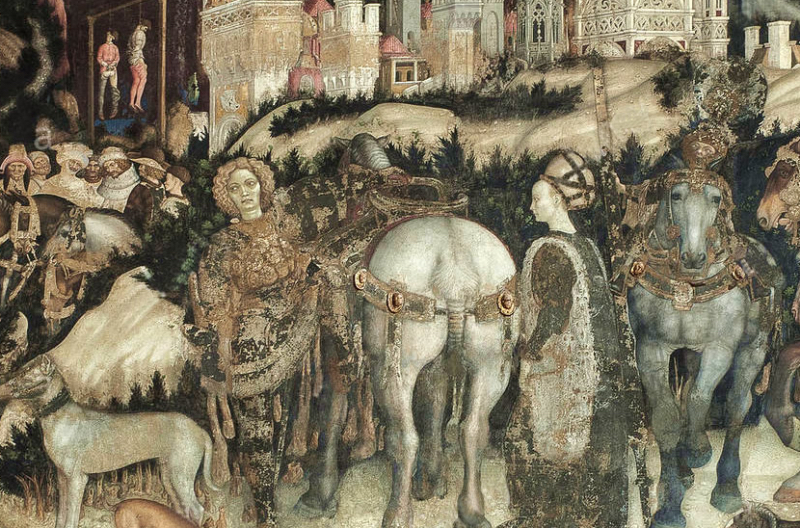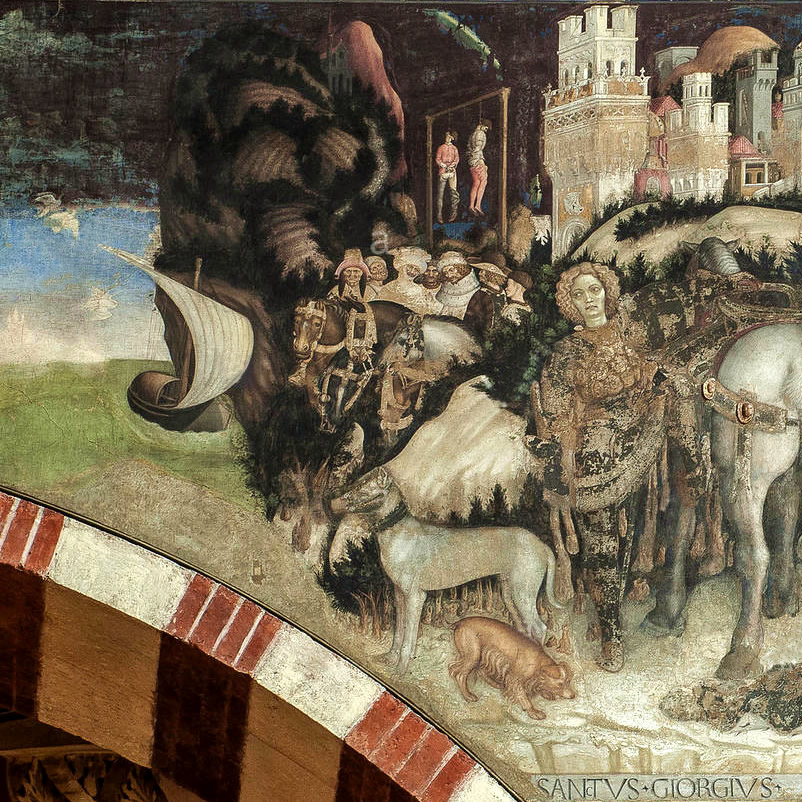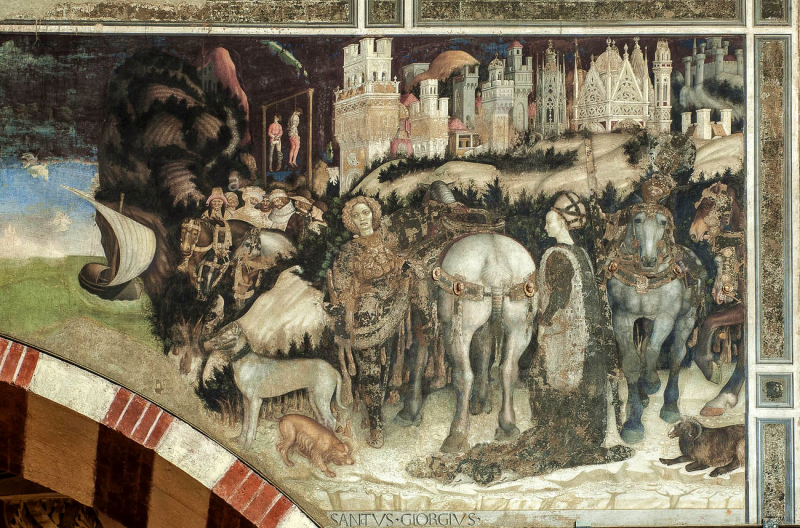
In the heart of Verona, in the marvellous Pellegrini Chapel of the Church of St. Anastasia, there is a masterpiece that has spanned the centuries with its beauty and symbolic meaning: St. George and the Princess by Pisanello. Created between 1433 and 1438, this fresco is not only an extraordinary work of art, but also a valuable historical and cultural document.
Inspired by Jacopo da Varazze’s ‘Golden Legend’, Pisanello tells us, through meticulous detail and unparalleled technical skill, the story of the brave St. George and his clash with the dragon to save the princess. But what lies behind this epic narrative?
What political and symbolic messages did the artist want to convey? In this post, I take you on a discovery of Pisanello’s fresco, analysing the details and discovering the deeper meaning of this extraordinary work.
ST. GEORGE AND THE PRINCESS OF PISANELLO

Saint George and the Princess is considered Pisanello’s masterpiece.
Placed on the right-hand side of the wall above the entrance arch to the Pellegrini Chapel in Sant’Anastasia in Verona, it is inspired by the story contained in the ‘Golden Legend’ by Jacopo da Varazze.
ANALYSIS AND DESCRIPTION OF SAN GIORGIO AND THE PRINCESS OF PISANELLO
The fresco depicts Saint George as he is about to mount his horse to slay the dragon, to which the princess is destined.
Pisanello depicts the saint as a knight, in other words an armed hero ready to set out on his mission. Saint George holds his hand on the archon, while one foot is already in the stirrup and his gaze is turned to the boat that is to carry him across the waters of the pond where the dragon dwells.
The princess is depicted by Pisanello in profile and wearing fine clothes, placed between two horses, one white and one dark, which we can admire one from behind and the other from the front.
In the foreground there is also a greyhound which, like the two horses, is the result of an enormous amount of sketches, proofs and drawings that Pisanello produced.
Indeed, Pisanello’s graphic production is famous. He has the merit of having conceived drawing as a genre in itself and used it to carry out studies and anatomical analyses to complete his works.
The precious decorations that we can admire on the architecture but also on the clothes of the various characters remind us that the entire work belongs to the medieval tradition of the courtly tale. In this case, Pisanello’s fresco is perhaps used to convey a political message and alludes to the Turkish threat to the Eastern Roman Empire.
Following this symbolic reading of Pisanello’s Saint George and the Princess, it becomes clear that according to the artist, a hero like Saint George, symbol of the Christian church, is needed to save Constantinople (the princess) from the Turkish threat (the dragon).
The fall of the Eastern Roman Empire would not occur until some twenty years after the creation of this fresco, in 1453.

Pisanello’s fresco ‘Saint George and the Princess’ is not only a work of art of extraordinary beauty, but also a powerful historical and cultural symbol.
The Pellegrini Chapel in Verona therefore holds not only a work of art, but a testimony to history and art in the 15th century. Visiting this place and admiring Pisanello’s fresco allows one to take a journey through time, rediscovering the values, fears and aspirations of an era long gone but still capable of speaking to our present.
Saint George and the Princess by Pisanello remains a work that continues to fascinate and inspire, reminding us of the importance of art as a means of expression and reflection on the great questions of humanity. A masterpiece that deserves to be known and appreciated, not only for its beauty, but also for its profound historical and symbolic significance.

